P. C. Ching
Energy Efficiency for Proactive Eavesdropping in Cooperative Cognitive Radio Networks
Jan 10, 2022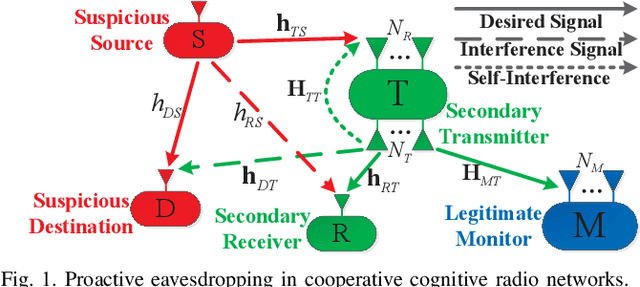
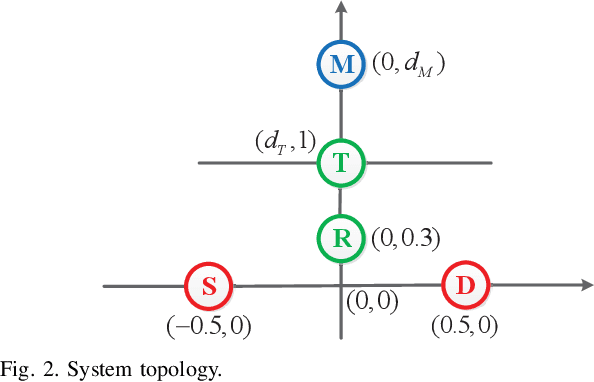
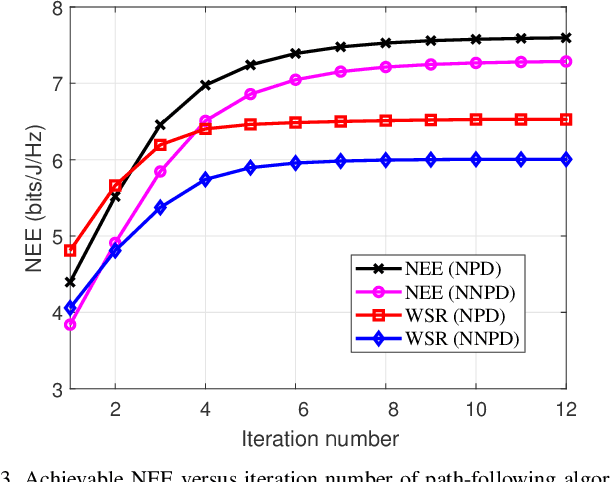
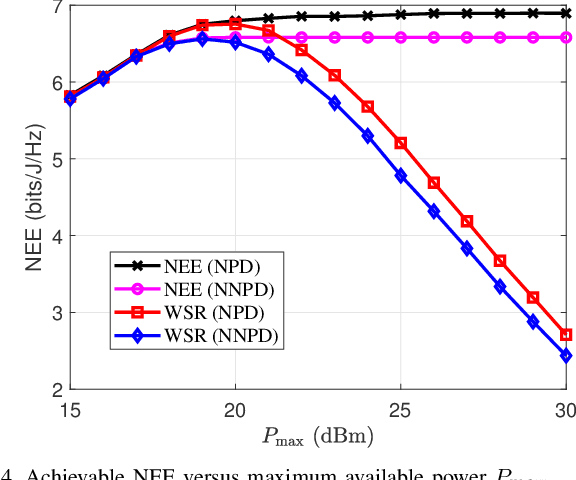
Abstract:This paper investigates a distant proactive eavesdropping system in cooperative cognitive radio (CR) networks. Specifically, an amplify-and-forward (AF) full-duplex (FD) secondary transmitter assists to relay the received signal from suspicious users to legitimate monitor for wireless information surveillance. In return, the secondary transmitter is granted to share the spectrum belonging to the suspicious users for its own information transmission. To improve the eavesdropping, the transmitted secondary user's signal can also be used as a jamming signal to moderate the data rate of the suspicious link. We consider two cases, i.e., non-negligible processing delay (NNPD) and negligible processing delay (NPD) at secondary transmitter. Our target is to maximize network energy efficiency (NEE) via jointly optimizing the AF relay matrix and precoding vector at the secondary transmitter, as well as the receiver combining vector at monitor, subject to the maximum power constraint at the secondary transmitter and minimum data rate requirement of the secondary user. We also guarantee that the achievable data rate of the eavesdropping link should be no less than that of the suspicious link for efficient surveillance. Due to the non-convexity of the formulated NEE maximization problem, we develop an efficient path-following algorithm and a robust alternating optimization (AO) method as solutions under perfect and imperfect channel state information (CSI) conditions, respectively. We also analyze the convergence and computational complexity of the proposed schemes. Numerical results are provided to validate the effectiveness of our proposed schemes.
Enhancing Segment-Based Speech Emotion Recognition by Deep Self-Learning
Mar 30, 2021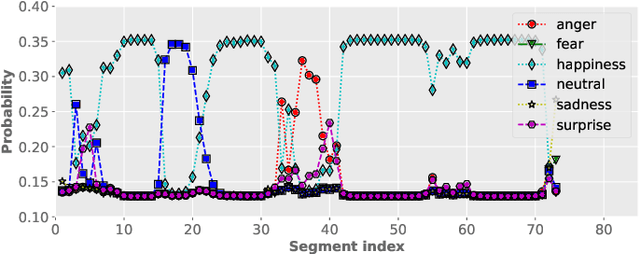
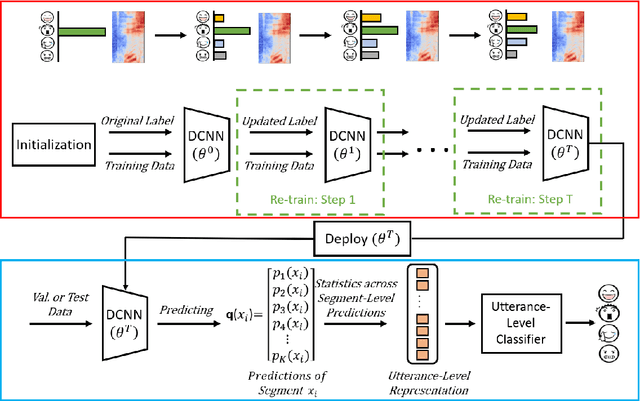

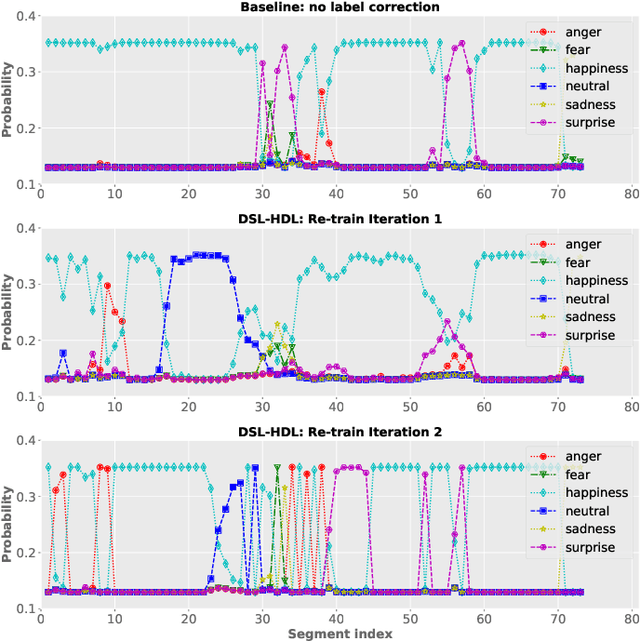
Abstract:Despite the widespread utilization of deep neural networks (DNNs) for speech emotion recognition (SER), they are severely restricted due to the paucity of labeled data for training. Recently, segment-based approaches for SER have been evolving, which train backbone networks on shorter segments instead of whole utterances, and thus naturally augments training examples without additional resources. However, one core challenge remains for segment-based approaches: most emotional corpora do not provide ground-truth labels at the segment level. To supervisely train a segment-based emotion model on such datasets, the most common way assigns each segment the corresponding utterance's emotion label. However, this practice typically introduces noisy (incorrect) labels as emotional information is not uniformly distributed across the whole utterance. On the other hand, DNNs have been shown to easily over-fit a dataset when being trained with noisy labels. To this end, this work proposes a simple and effective deep self-learning (DSL) framework, which comprises a procedure to progressively correct segment-level labels in an iterative learning manner. The DSL method produces dynamically-generated and soft emotion labels, leading to significant performance improvements. Experiments on three well-known emotional corpora demonstrate noticeable gains using the proposed method.
OTFS Signaling for Uplink NOMA of Heterogeneous Mobility Users
Feb 09, 2021
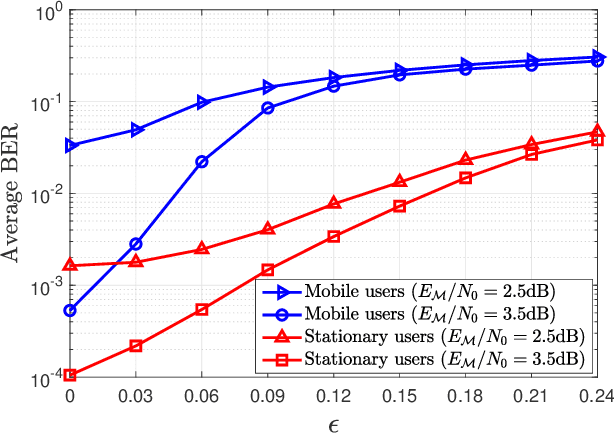
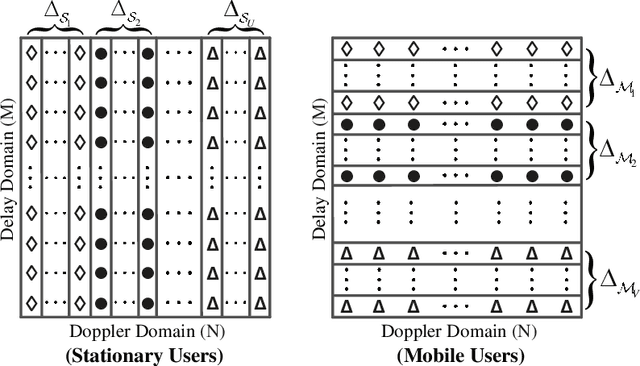
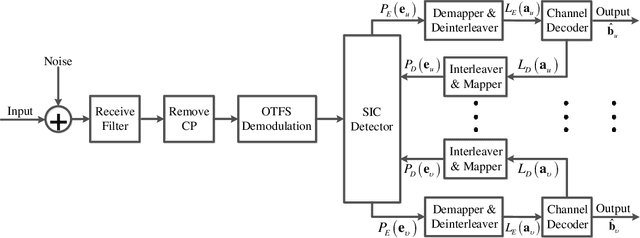
Abstract:We investigate a coded uplink non-orthogonal multiple access (NOMA) configuration in which groups of co-channel users are modulated in accordance with orthogonal time frequency space (OTFS). We take advantage of OTFS characteristics to achieve NOMA spectrum sharing in the delay-Doppler domain between stationary and mobile users. We develop an efficient iterative turbo receiver based on the principle of successive interference cancellation (SIC) to overcome the co-channel interference (CCI). We propose two turbo detector algorithms: orthogonal approximate message passing with linear minimum mean squared error (OAMP-LMMSE) and Gaussian approximate message passing with expectation propagation (GAMP-EP). The interactive OAMP-LMMSE detector and GAMP-EP detector are respectively assigned for the reception of the stationary and mobile users. We analyze the convergence performance of our proposed iterative SIC turbo receiver by utilizing a customized extrinsic information transfer (EXIT) chart and simplify the corresponding detector algorithms to further reduce receiver complexity. Our proposed iterative SIC turbo receiver demonstrates performance improvement over existing receivers and robustness against imperfect SIC process and channel state information uncertainty.
 Add to Chrome
Add to Chrome Add to Firefox
Add to Firefox Add to Edge
Add to Edge